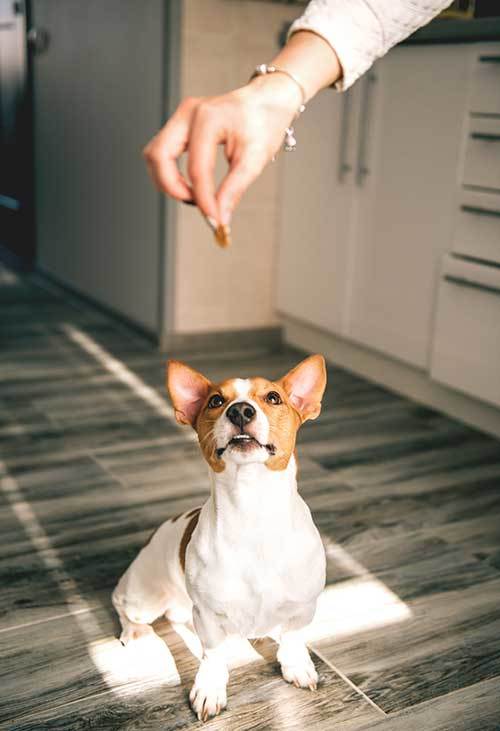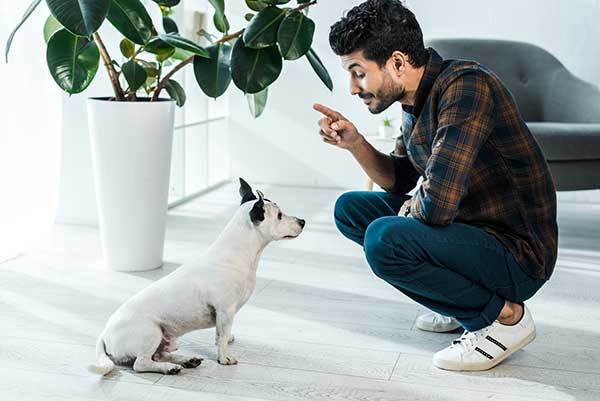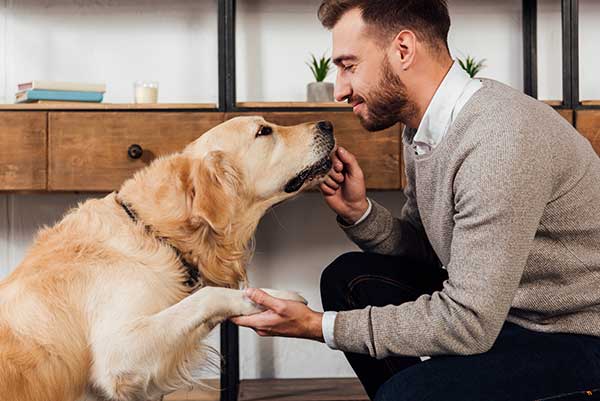We all love to spoil our canine friends by showering all our affection. Training your dog might not be at the forefront of your decision-making process when you bring home your furry companion. But, training your dog is one of the major responsibilities of a dutiful dog parent. After getting your pet home, it is essential to start their training without delay.
Failing to train your dog might pave the way for unwanted or aggressive behaviors. You don’t need to spend exorbitant amounts for hiring a dog trainer. You can start training your dog yourself! The main question is, where can you start? How can you train your puppy or your adult dog?
Here are some training tips that can make the process easier for you:
1. Name and Den are essential!
Do you know that the name you select for your dog plays a crucial role in successfully training them? Determining an appropriate name for your canine friend is a fun process. You might think, ‘Which name would be appropriate for my dog?’
People generally tend to choose short and cute names for their pets. Here’s an extra tip! You should choose names that have a strong ending with strong consonants. Names like Tucker, Ginger, and Oliver are more likely to perk up your pet’s ears. Names that emphasize the last alphabet are better for training your dog.
This also works wonderfully if you are bringing home an older dog. While there is a concern that they might be used to their previous name, it doesn’t take them long to recognize their new name. If you are bringing home an adult dog from an abusive environment, changing its name is recommended. While dogs have a greater emotional recovery power, a new name signifies a new and fresh start to their lives.
No matter which name you choose for your dog, it is vital to associate the name with positive experiences. You can easily train your dog and make them obedient when they start to realize that whenever they hear their name, they will get to experience fun-filled activities.
Another essential part is to assign their own space. Dogs are territorial. They like to have a space that they can call their own. Most owners think that keeping their dog in a crate is inhumane. This is not the case. Contrary to popular belief, dogs tend to feel more safe and secure when they have a space that they know is their own. Brief periods when your dog can rest alone in its own space are an essential part of your dog’s house training.

2. Developing a strict peeing schedule and a specific area
No one likes to have a house smelling like dog poop. One of the most essential parts of training your dog is potty training them. You should teach your dog to urinate at specific times. These might include after their walk, before going to bed, or right after their meal. If puppies and dogs are not trained properly, they might poop and urinate in the house itself.
Note: Potty training is much easier when your dog is still a puppy. However, potty training an adult dog is not impossible. However, it might take a little longer to potty train an adult dog, especially those from an abusive background.
Apart from developing a specific bathroom schedule for your dog, it is also important to assign a particular area. Identifying a place outside your house for urination will teach your dog that they need to go outside for peeing or pooping.
One of the best ways to develop a peeing schedule and the peeing area is to combine it with your dog’s walking schedule. In that case, you should take your dogs out for a walk at least three times every day.
3. Associating training commands with treats
One of the easiest ways to start your dog’s training is, to begin with, easy and basic commands. Simple commands are recommended at the beginning of the training sessions as it is easier for your pup to follow them. As you are not a professional trainer, these commands would be easier for you too!
In the case of small pups, these behavioral problems might arise in the future, while adult dogs coming from abusive backgrounds might already have these problems. Starting with the basic commands would help you overcome or completely prevent your dog’s behavioral problems.

Here are some basic dog commands that you can begin your home training with:
a) ‘Come’ Command
This will prevent your dog from running away when off the leash. If your dog starts running after people or other dogs, your pup can land in some legal trouble. God forbid, if they bite a human or another animal, people can petition to put your dog down.
Some dogs that do not have the training also tend to jump on visitors when they come to your home. This command will help to prevent that too. Stand at a small distance and encourage your dog to come towards you. Increase the distance slowly as they get trained for smaller distances. Emphasize the command “come” throughout the activity until the dog masters the command.
b) ‘Sit’ Command
The “sit” command will help make your dog calmer and easier to control. You can associate this with the “come” command. This will prevent your dog from jumping on your guests or other people doing their walks.
Hold a treat in one hand and raise your hand until your dog lowered their bag and sat down. You can increase the reward time that will increase their patience. Of course, it is easier to manage dogs with greater patience.
c) ‘Stay’ command
This is similar to the last cue. It will help calm down your dog and help you have better control of your dog. This is mostly helpful when you do household chores and want your dog to remain in one place.
The first step would be to ask your dog to sit. Then open your palms and say the command “stay”. Slowly move backward and reward your fur baby with affection and treats if they stay. Gradually increase the steps you are taking before giving a treat. This will increase their duration to stay put.
It is however essential to associate these commands with positive reinforcements. These reinforcements might include compliments, affection, or treats. Every time you make these commands, your dog will associate it with the treats or cuddles that they will get at the end.

4. Exercise and Play
Socializing your dog is another important part of dog training. This could be easily achieved by taking your dog out for playing. Playing with other dogs or even with you is an outlet for their physical exercise. Insufficient exercise could result in poor social skills and poor health for your pup. You should make sure that your dog’s social interaction and exercise needs are met before any lengthy crating or confinement sessions.
Minimum to no exercise of your pup could result in various health complications. Medical procedures can be costly and would cost you a fortune. While you can get them covered through various insurances for dogs, prevention is always better than cure.
Brief exercising and socializing sessions even for 15 to 20 minutes, can prove to be very beneficial for your dog’s health. However, you must ensure that your pet does not get overworked. Exercising requirements also vary depending on the breed of your dog. Smaller dogs require less training than bigger dogs.
5. No biting!
Biting is a big concern among larger dogs. However, this concern is unfounded as all dogs pose the risk of biting. You can start by discouraging your puppy from nibbling at a younger age. However, a profound solution could be achieved through obedience training and encouraging proofing behavior.
Obedience training will help you to keep your dog’s behavior under control. Training helps to increase your dog’s confidence, reducing their biting tendencies. Another important activity is to introduce your pet to new environments and new people. Maintaining their behavior in varied settings is a form of internal training and will have a profound impact on their behavior.
In Conclusion
You have to remember, no matter however little progress your canine friend has made, they have worked very hard throughout their training. End every training session with a lot of praises, treats, and cuddles. This will keep their tails wagging and keep them interested in working harder in upcoming training sessions.

